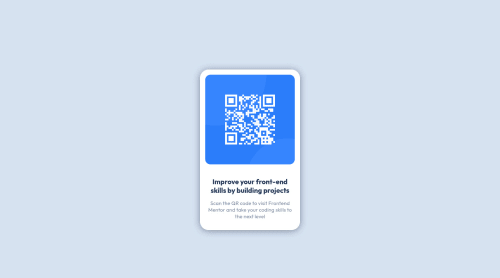Sample QR Code Component

Solution retrospective
I had slight difficulty in choosing the unit for sizes. I had it in mind that pixel units do not scale but I was unsure if I could use rem or just pick a pixel unit based on the most popular screen size. I chose the latter. More research needs to be done into the use of scalabe units.
Please log in to post a comment
Log in with GitHubCommunity feedback
- @Kl3va
Yeah. I agree with you. Always use px with borders and shadows. Using rem is a consistent approach for typography. You set the root font-size. Something like;
html { box-sizing: border-box; font-size: 112.5%; //18px = 1rem }
This is calculated as (18/16) * 100. This would allow a user to change the page font-size as he/she deems fit.
Join our Discord community
Join thousands of Frontend Mentor community members taking the challenges, sharing resources, helping each other, and chatting about all things front-end!
Join our Discord